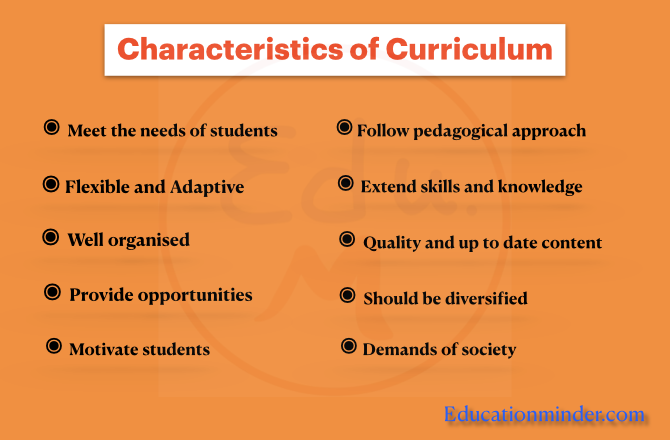The curriculum is the backbone of any school or university. It is designed to provide a set of skills and knowledge that will equip students with the necessary tools for success in their future careers.
It is the framework within which a school or institution organizes its teaching and learning Process.
Meaning of Curriculum
The word curriculum is derived from latin word ‘currere’.
Currere—means ‘Race Course’.
A curriculum is a planned course of study. It is an outline of what should be taught and learned in an educational institution such as a school, or college. It is used to organise and teach a particular course.
Definition of Curriculum
According to Kerr, “Curriculum is all the learning which is planned and guided by the school, whether it is carried on in groups or individually, inside or outside of school”.
According to Good, “Curriculum is a general over-all plan of the content or specific materials of instruction that the school should offer the student by way of qualifying him for graduation or certification or for entrance into a professional or vocational field”.
Characteristics of Curriculum
Let’s discuss some points which cover the characteristics/features of curriculum. These are as follows:
1. Meet the needs of students
Educational experts design the curriculum keeping children in mind. What is the benefit of the curriculum if it fails to meet the needs of children? Therefore it should be designed according to the needs of children so that they can get maximum benefits from it.
2. Flexible and adaptive
Curriculum should be flexible. It should not be rigid, otherwise it will create problems in its adaptation. Irrelevant material and content should not be a part of it; otherwise, we can’t call it a good curriculum. Stakeholders such as teachers, parents, or headmasters can play an important role to maintain the flexibility of curriculum.
3. Well organised
Curriculum should be well organised. The content of curriculum should be organised in such a way that it connects students’ prior knowledge with the new knowledge. There should be a proper link between theory and practical knowledge.
All the subjects or topics should have clearly defined objectives
4. Provide opportunities for students
A good curriculum provides enough opportunities for students to explore their talent and creativity. The all-round development of children takes place when they are exposed to new challenging environment.
Appropriate activities should be included in the curriculum to fulfil the Special learning needs of gifted, backward, and disabled learners.
5. Motivate students
Curriculum as a tool motivates students to learn more and perform various activities. It motivates students by making the process of learning more enjoyable and interesting. It helps students focus more on their mastery goals.
6. Follow pedagogical approach
Curriculum follows a pedagogical approach. Various pedagogical approaches such as Activity based learning, Team teaching, inquiry based learning, Cooperative and collaborative learning are used by teachers to teach students. These approaches help teachers choose desirable instructional strategies.
7. Demands of society
Society plays an important role in determining what is relevant for the students. Therefore, curriculum should reflect the needs and demands of society.
Those subjects should be included in the curriculum which provide value to society and appreciate its cultural heritage.
8. Extend skills and knowledge
A good curriculum extends students’ skills and knowledge by
- Promoting higher order thinking skills
- Developing curiosity
- Removing their misconceptions
9. Quality and Up-to-date content
Curriculum should provide quality and up-to-date content to students which reflect their personal interests. Content should be properly analysed and research based. There must be scope for adding new and relevant information to the curriculum.
10. Should be diversified
A uniform curriculum will not work in today’s education system. Therefore, curriculum should be diversified. Diversified curriculum provides a wide range of opportunities to students, especially those from backward class, and prepares them for the future.
Some other characteristics
11. It should be designed by keeping in mind the aims and objectives of education.
12. It should follow psychological principles.
13. It should promote the interaction between teachers and students.
14. It should promote integrated learning.














1 Comments
“Wow! This blog is really helpful and beautifully showcases the charm of Kerala. I’m planning a Kerala Tour Package from Cochin, and reading about these destinations has made me even more excited. The details on Munnar are fantastic—definitely looking into Munnar Tour Packages from Cochin for my next trip. Great work on highlighting such amazing places and travel tips!”
ReplyDelete